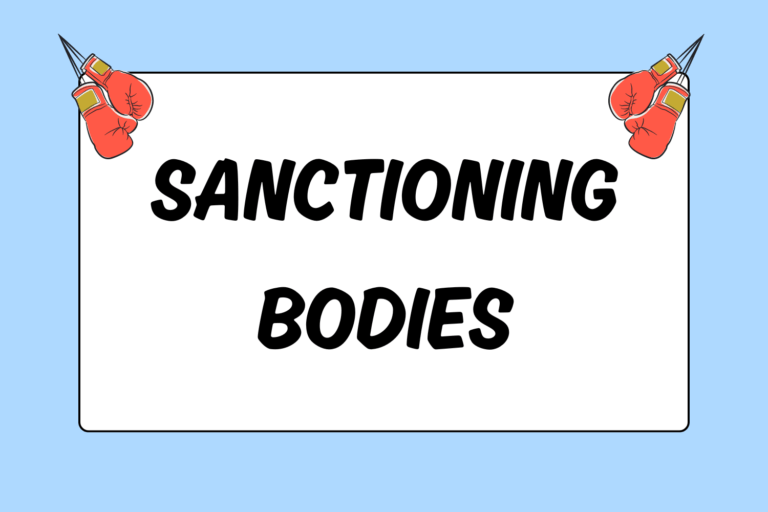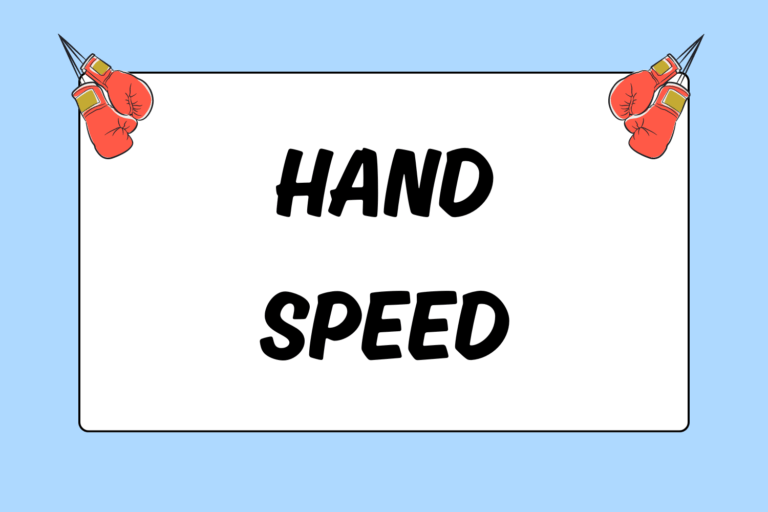Every boxing coach has a unique opinion about strength training. Some old-school instructors discourage boxers from incorporating strength training in their regiment altogether. Many traditionalists insist that weight training decreases speed and flexibility, results in weight gain, and does not directly apply to the sport. Other trainers praise bodyweight exercises, but strongly discourage free weight training or unorthodox training, such as resistance bands.
The fact of the matter is that strength training can greatly improve your overall abilities in the ring if used properly. How you strength train is more important than what you use. Focus on sport-specific exercises, whether you train with bodyweight drills, free weights, or resistance bands. This guide identifies the different types of strength and suggests methods that increase your overall strength as a boxer.
Types of Strength
For many people, the term “strength” elicits an image of a bodybuilder pressing a large amount of weight for a single repetition. Other people imagine an athlete sweating out 50 pull-ups. However, strength comes in many different forms and can be broken down into four main groups:
Maximal Strength
Maximal strength relates closely to the idea of a bodybuilder pressing a great deal of weight for a single rep. Maximal strength involves exerting an ultimate amount of force at maximum effort.
Endurance Strength
Endurance strength involves long durations of muscle use. “Stamina” is the colloquial term for endurance strength. Contrary to common belief, stamina does not always relate to a single exercise. Endurance strength is commonly practiced using intense interval training, which involves several different exercises that are performed successively.
Speed Strength
Speed strength involves quick movements with relatively low resistance. Throwing a series of quick punches while wearing boxing gloves is an example of speed strength. The punches are thrown at maximum speed with the resistance of light-weight gloves.
Explosive Strength
Explosive strength is the ability to expend energy in quick, powerful movements. Explosive training requires you to complete a movement as fast as possible. These movements are normally practiced with considerable resistance, such as free weights or resistance bands.
The Truth Behind Your Body
You need to incorporate each aspect of strength training in order to be a well-rounded boxer. Maximal strength is less necessary than the other three, but heavier free weights/resistance should still be included in your routine. You can discard common strength training myths once you understand muscle functionality. Here is a brief overview of how your muscles work:
Motor Units
Your muscles are made up of various motor units. Within these motor units are hundreds of muscle fibers and a single motor neuron. The motor neuron sends a signal that tells the fibers when to contract.
Each motor unit contains fibers of the same type: Slow-twitch or fast-twitch. Fast-twitch muscles are triggered during power and speed training. Low intensity or longer term aerobic exercise triggers slow-twitch muscles.
Intense training and power lifting target the fast-twitch fibers that are used during a bout. Excessive maximal strength training can be problematic for boxers because it leads to weight gain and soreness. You should target high-twitch fibers with heavier lifting/resistance no more than twice a week. Power lifting improves both your quickness and overall strength, both of which are necessary for boxers.
Overcoming Common Myths
Many boxing coaches believe that strength training can jeopardize speed, but this is simply not the case. Engaging your fast-twitch muscles inevitably improves speed.
Other trainers insist that strength training reduces flexibility and range-of-motion. However, strength does not affect your muscles’ ability to stretch or contract. For instance, gymnasts are among the strongest athletes in relation to their bodyweight, yet they are extremely flexible.
Lastly, you may be wary of strength training for fear of weight gain. While slight muscle hypertrophy (enlargement) may occur, it should not affect your weight dramatically as long as you lift in moderation. In fact, you burn a significant amount of calories and eliminate fat each time you strength train. Your diet has a larger impact on your weight. You should maintain a safe and comfortable weight if you supplement your boxing routine with proper dieting habits, strength training, and roadwork.
Train for Functionality, Not Aesthetics
Strength training, like roadwork, is a great supplement to your boxing routine. Your primary focus should always be to improve your technique and mechanics in the ring. Mixing in strength training, however, can definitely improve your overall athleticism. The strongest boxer doesn’t make the best fighter, but the stronger of two equally skilled boxers definitely has an advantage. In general, your strength training workouts should be brief, yet effective. Continue reading to learn basic strength training exercises.
Legs & Hips
Your legs, along with your core, work as your foundation. The following exercises touch on the four types of strength while focusing mainly on your legs and hips:
- Jump squats
- Mountain climbers
- Power cleans
- Walking lunges
- Hip/thigh extension
Of course, there are a multitude of exercises that target your legs and hips. The exercises listed in this guide are a good starting point, providing challenges that have sport-specific benefits.
Core
As mentioned above, it’s essential to develop a strong core. Your core is continuously engaged as you throw punches and use defensive maneuvers. Keep in mind that your core includes more than just your abdominal muscles – strengthening your external obliques and lower back is extremely important as well. The following exercises are a fantastic stepping stone for strengthening your core:
- Back Extension
- Bicycle Crunches
- Forward/Side Planks
- Side Bends
- Russian Twists
Each of these exercises targets your core with precision.
Upper Body
During a bout, you rely on your shoulders for both stamina and power. Your entire upper body must be well-conditioned, though, in order for you to generate quick, powerful punches. Stronger fighters are more likely to dominate opponents at close-range. Some beneficial upper body exercises include:
- Pull-ups
- Dips
- Pushups
- Dumbbell Chest Press
- Shoulder Push Press
- Bent Over Dumbbell Fly
While the above exercises are extremely effective, by no means should you feel limited to one routine. Never hesitate to try new exercises that could potentially improve your overall abilities.
Engaging Your Whole Body
Strength training fortifies your bones, ligaments, and muscles, while also decreasing the possibility of injury. Such training sessions should be short, yet effective. Becoming a bodybuilder isn’t your goal. Focus on increasing your overall strength in order to improve your performance as a boxer. Make your workouts as sport-specific as possible.
Improve the power, endurance, speed, and explosiveness of your muscles by involving interval training in your routine. Such workouts improve your overall strength and anaerobic capabilities. Allow yourself necessary time to heal by scheduling your strength and sprint workouts on sparring off-days. Lastly, make sure you give yourself enough time to recover from strenuous routines prior to competition. Generally, you should refrain from strength training within a week of a bout.





